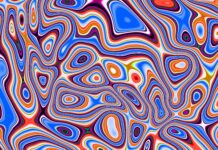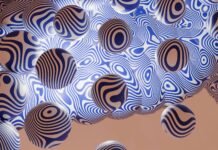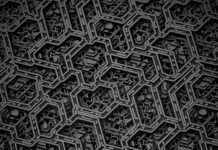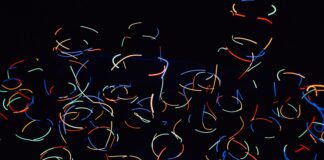In the ever-evolving world of fashion, understanding how AI will change the fashion graphic design is no longer a futuristic curiosity—it’s a present-day necessity. From automating creative workflows to redefining visual storytelling, how AI will change the fashion graphic design is already influencing how brands conceptualize, produce, and distribute their visual content. Whether you’re a designer, marketer, or fashion entrepreneur, grasping how AI will change the fashion graphic design is essential to staying competitive in an industry increasingly shaped by intelligent technology.
Traditionally, high-quality graphic design required expensive software and specialized skills. AI is changing that by making powerful design tools accessible to a wider audience. Emerging designers, small brands, and entrepreneurs can use AI-powered platforms to create professional-grade visuals without extensive training. This democratization fosters creativity, diversity, and innovation in fashion gra
1. AI Will Automate Repetitive Design Tasks
One of the most immediate benefits of AI in fashion graphic design is its ability to automate time-consuming tasks. Designers often spend hours resizing images, adjusting layouts, and formatting content for different platforms. AI tools can handle these tasks instantly, freeing up creative professionals to focus on innovation and storytelling. Automation also reduces human error and ensures consistency across brand assets, which is crucial for maintaining a cohesive visual identity in fashion campaigns.
2. AI Will Enhance Trend Forecasting and Visual Strategy
Fashion thrives on trends, and AI is becoming a powerful tool for predicting them. By analyzing vast datasets from social media, runway shows, consumer behavior, and historical design patterns, AI can identify emerging visual trends before they hit the mainstream. This allows graphic designers to stay ahead of the curve and create visuals that resonate with current consumer preferences. AI also helps brands align their graphic design strategy with broader cultural movements, ensuring relevance and impact.
3. AI Will Personalize Visual Content for Target Audiences
Personalization is no longer limited to product recommendations—it’s transforming graphic design too. AI enables fashion brands to tailor visual content to specific audience segments based on demographics, behavior, and preferences. For example, a brand can create multiple versions of a campaign graphic that appeal to different age groups, regions, or style sensibilities. This level of customization increases engagement and conversion rates, making graphic design a strategic asset in fashion marketing.
4. AI Will Revolutionize Typography and Layout Design
Typography and layout are foundational elements of graphic design, and AI is bringing new possibilities to both. Machine learning algorithms can analyze successful design compositions and suggest optimal font pairings, spacing, and hierarchy. AI tools also adapt layouts dynamically based on content length, platform requirements, and user interaction patterns. This ensures that fashion graphics are not only visually appealing but also functionally effective across digital and print media.
Traditionally, high-quality graphic design required expensive software and specialized skills. AI is changing that by making powerful design tools accessible to a wider audience. Emerging designers, small brands, and entrepreneurs can use AI-powered platforms to create professional-grade visuals without extensive training. This democratization fosters creativity, diversity, and innovation in fashion gra
5. AI Will Generate Original Design Concepts
AI is no longer just a support tool—it’s becoming a creative collaborator. Generative design models can produce original graphics, patterns, and illustrations based on input parameters such as mood, color palette, and brand identity. Fashion designers can use these AI-generated concepts as inspiration or integrate them directly into campaigns. This expands creative possibilities and accelerates the design process, allowing brands to produce fresh content at scale without sacrificing quality.
6. AI Will Improve Collaboration Between Designers and Teams
Graphic design in fashion often involves multiple stakeholders—designers, marketers, merchandisers, and executives. AI facilitates smoother collaboration by centralizing design assets, tracking revisions, and providing real-time feedback. Intelligent project management tools powered by AI can assign tasks, monitor progress, and suggest improvements based on performance data. This streamlines workflows and ensures that everyone is aligned on creative goals, especially during high-pressure campaign launches.
7. AI Will Support Sustainability in Design Practices
Sustainability is a growing priority in fashion, and AI is helping graphic designers contribute to this goal. By analyzing resource usage and environmental impact, AI can recommend eco-friendly design choices such as low-ink layouts, recyclable materials, and digital-first formats. AI also supports virtual prototyping, reducing the need for physical samples and minimizing waste. These innovations align graphic design with broader sustainability initiatives, enhancing brand reputation and consumer trust.
Traditionally, high-quality graphic design required expensive software and specialized skills. AI is changing that by making powerful design tools accessible to a wider audience. Emerging designers, small brands, and entrepreneurs can use AI-powered platforms to create professional-grade visuals without extensive training. This democratization fosters creativity, diversity, and innovation in fashion gra
8. AI Will Enable Real-Time Design Adaptation
In the fast-paced fashion industry, timing is everything. AI allows designers to adapt graphics in real time based on campaign performance, user feedback, or market shifts. For example, if a particular visual isn’t resonating with audiences, AI can suggest edits or generate alternatives instantly. This agility ensures that fashion brands remain responsive and relevant, turning graphic design into a dynamic tool for engagement and conversion.
9. AI Will Elevate Visual Storytelling and Brand Identity
Graphic design is more than aesthetics—it’s about telling a story. AI enhances this by analyzing brand history, consumer sentiment, and cultural context to inform design choices. It helps designers craft visuals that evoke emotion, convey values, and build a cohesive brand narrative. AI also ensures consistency across touchpoints, reinforcing identity and recognition. In a crowded fashion market, compelling visual storytelling powered by AI can be the difference between blending in and standing out.
10. AI Will Democratize Access to High-Quality Design
Traditionally, high-quality graphic design required expensive software and specialized skills. AI is changing that by making powerful design tools accessible to a wider audience. Emerging designers, small brands, and entrepreneurs can use AI-powered platforms to create professional-grade visuals without extensive training. This democratization fosters creativity, diversity, and innovation in fashion graphic design, allowing more voices to contribute to the industry’s visual landscape.
Conclusion: Embracing the Future of Fashion Graphic Design
The integration of AI into fashion graphic design is not just a technological shift—it’s a creative revolution. From automation and personalization to sustainability and storytelling, AI is redefining how fashion brands conceptualize and execute their visual strategies. Those who embrace these changes will not only enhance their design capabilities but also build deeper connections with their audiences. Understanding how AI will change the fashion graphic design is essential for anyone looking to thrive in a visually driven, digitally empowered fashion world.














